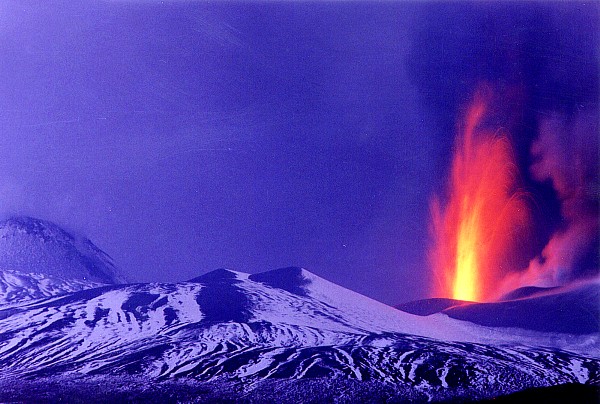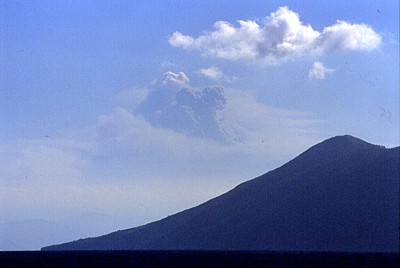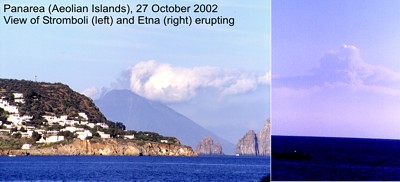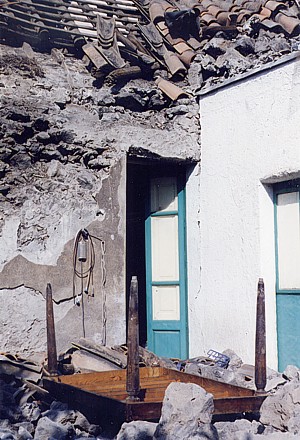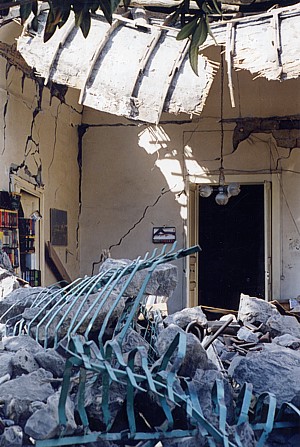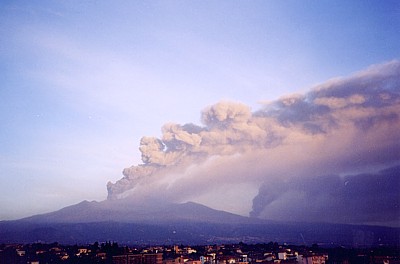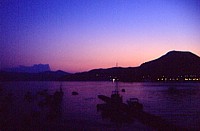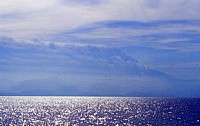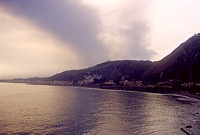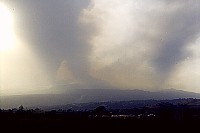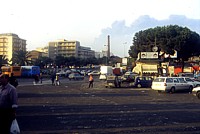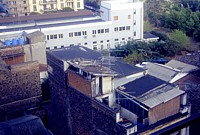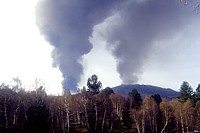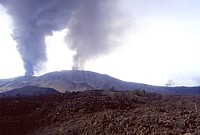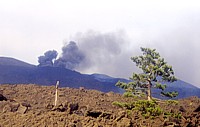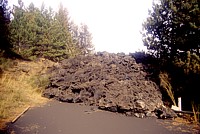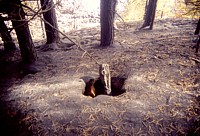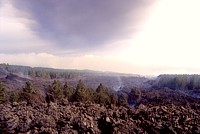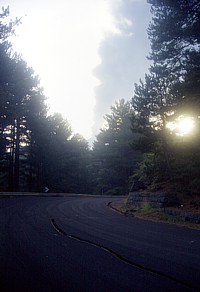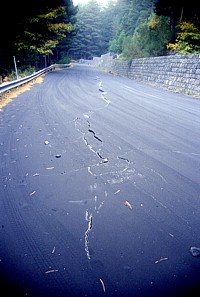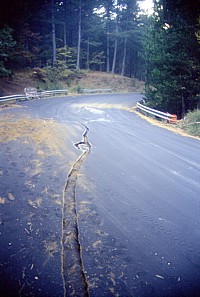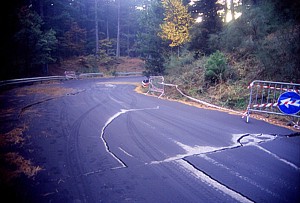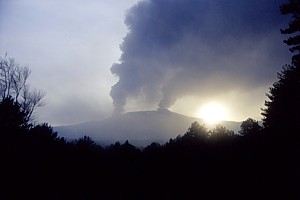| Etna
index |
||
| Geology | Geological history | Cones and craters |
| Eruptive characteristics | Eruptions before 1971 | Eruptions since 1971 |
| Etna and Man | References | Web sites |
| Weather forecasts | FAQ | Latest news |
Etna
photo gallery: 2002
Etna on the move - the 2002-2003 eruption
![]()
Following its eruption in July-August 2001, Etna took a rest of about ten months, then, in the summer of 2002, magma reappeared in two of its summit craters. This had been preceded since early March by ash emissions, first from the Bocca Nuova and then also from the Northeast Crater. For nearly three months, the latter of the two showed intermittent Strombolian activity, and the floor of its central pit rose to 50 m below its rim. At night, explosions were visible even from great distance. Etna was back on the stage, but no one would have expected it to erupt in the manner it did during the night of 26-27 October 2002. But this is not the place to repeat the chronology of those events, which are described in detail on the 2002-2003 eruption page. Here are the photograps of that eruption, which caused serious distress to the people living in a large area around the volcano, and three stressful months for all who were engaged in dealing with the emergency - the scientists, civil protection, and those whose property was lost or at risk
Distant view of the eruption, 27 October 2002
First
view of Etna's eruption on 27 October 2002, taken from a sailboat
offshore the island of Vulcano, Aeolian Islands (seen in the foreground),
about 100 km north of Etna. An enormous cloud of ash is rising
thousands of meters into the sky, veiling the volcano. The clear
weather on this day permits to see two volcanoes erupting at the
same time - Stromboli (lower left photograph) and Etna (lower
right photograph) |
Close view of the eruption, 27 October 2002
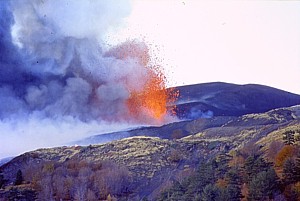 |
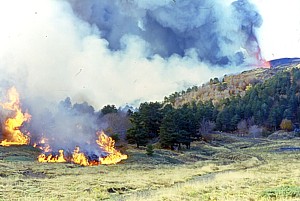 |
This
is the close-up view of the eruption, seen and photographed by
Pippo Scarpinati on 27 October 2002. Left photograph shows lava
fountaining from a vent on the Northeast Rift, which has split
open along a length of about 2 km, and lava from this vent is
rapidly spilling down the steep slope below the vent, heading
directly toward Piano Provenzana and its touristic infrastructures.
At noon on the same day, the fiery flood arrives on the plain,
burning a ski school and then proceeding further across the flat
terrain. Everybody who has remained there until then - mostly
owners and employees of the tourist facilities, local residents,
journalists, and geologists - is forced to leave the place instantly,
because the only access route to Piano Provenzana is in the path
of the lava flow. No one was there to see how Piano Provenzana
vanished from the face of the planet The last photographs taken of Piano Provenzana that day - along with the one above - are available on the web pages (in Italian) of the Etnean volcanological and mountain guides: etnaescursioni.it, and of the Finocchiaro photo studios of Linguaglossa: Finocchiarofotografi.net - note that the latter site wrongly gives 24, not 27, October as the first day of the eruption |
|
Earthquakes on Etna's eastern flank, 29 October 2002
Two eruptions-in-one, 31 October 2002
This
morning view, taken by Pippo Scarpinati, of the erupting volcano
from Acireale (lying to the southwest of Etna) clearly shows the
two eruption sites on the southern (left) and northeastern (right)
flanks. And in fact, both are producing different types of magma
with different eruptive styles, though the process that triggered
the eruption was very likely the same - the sliding of a huge
portion of the eastern flank of the volcano |
Lipari to Catania, 30-31 October 2002
Northeast Flank, 1 November 2002
'a muntagna scassau, 1 November 2002
Return to the Etna photo gallery
Copyright © Boris Behncke, "Italy's Volcanoes: The Cradle of Volcanology"
Page set up on 2 August 2003

